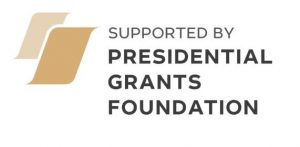 Mass vaccination against coronavirus began in December 2020 in Russia. Since then, a lot of fake information was spread through social networks and messengers about the vaccination itself and about the vaccination procedure. There is a video, which is especially often reposted on social networks, in which a man says that he was allegedly sent for vaccination, but in the end they tried to force him to sign a consent form to participate in trials of a vaccine against COVID-19. “Pravmir.ru” figured out why this is a fake.
Mass vaccination against coronavirus began in December 2020 in Russia. Since then, a lot of fake information was spread through social networks and messengers about the vaccination itself and about the vaccination procedure. There is a video, which is especially often reposted on social networks, in which a man says that he was allegedly sent for vaccination, but in the end they tried to force him to sign a consent form to participate in trials of a vaccine against COVID-19. “Pravmir.ru” figured out why this is a fake.
In the video, the man is looking through a multi-page document called “Research Participant Information Sheet” and explains that the doctors tried to distract his attention from the contents of the papers and insisted that everything should be signed quickly.
“It turns out that by signing this document, we agree that we are not participating in vaccination, but in a medical experiment,” he says.
Why is it fake?
The video is shared in the group of the anti-vaccination “expert” Galina Chervonskaya in “Odnoklassniki”, and people send it to each other on social networks and via WhatsApp.
The man in the video says, “They sent us to get vaccinated against [COVID] from the office at Kalyagin st.” It is not clear, who were sent to get vaccinated, from what office, and from which Kalyagin Street, because there are two streets with this name in the Krasnoyarsk Krai.
The key point is the moment, when he said, “sent us from the office”, after which he added, “of course, we went there and refused to get vaccinated”, which is manipulation. In other words, it goes without saying for the author of the video that people should refuse to get vaccinated, although he does not give his reasons.
The video is about vaccination (not the research), which is now taking place in Russia as part of the compulsory medical insurance.
The document shown there does really exist. But this is a consent form to participate in the 3rd phase of the vaccine trials.
The vaccination procedure, which started at the beginning of December last year, is regulated by the letter of the Ministry of Health of the Russian Federation of December 9, 2020 N 17-0 / and / 2-18965. It describes the vaccination procedure, the necessary equipment for the vaccination room, the storage conditions for the vaccine, as well as the list of documents that the patient must sign before vaccination. There are only two of them: the patient’s questionnaire and voluntary informed consent for the administration of the vaccine.
What do patients say about vaccination?
Patients who had already received the vaccine told Pravmir.ru about the procedure and what documents they had to signed before the vaccination.
Oksana, Moscow:
“I signed up for the vaccination via the Internet. When I arrived at the appointed time, I was given documents that needed to be signed: a questionnaire and a consent form to vaccination. It was one sheet of paper filled in on both sides.
The questionnaire contained standard questions about the state of health on whether I had allergic reactions, when was the last time I had ARVI, whether I had any autoimmune diseases, as well as questions about pregnancy and breastfeeding. That is, the questions regarded contraindications to vaccination.
After signing these two documents, a doctor examined me, took my blood pressure, measured my temperature and issued a referral for vaccination.”
Elizaveta Novikova, St. Petersburg:
“I signed up for vaccination through the portal of the City Health Administration. First, I was given a standard informed consent form (a standard one) and a questionnaire. These two sheets had to be filled out and signed, then I had to stand in line for a medical examination. There, everything from the questionnaire was copied into another questionnaire, then my oxygen saturation, pulse, and blood pressure was measured.
After that, I was sent to a doctor who looked through this questionnaire, listened to my lungs, looked at my throat, asked me whether I was on medication, and whether I had chronic diseases, and gave me a referral for vaccination. In the same office, a medical registrar entered the data of my passport, insurance policy and individual insurance account number into the computer. After that, I was sent directly for vaccination.”
Maria, Moscow:
“First, I signed up for vaccination through an application (electronic medical record). I was assigned a date and time and had a preliminary call with a request to confirm the visit.
The polyclinic gives a questionnaire to fill out and a voluntary informed consent form for vaccination. This is a double-sided sheet of paper that you must sign on each side. In the questionnaire, you need to indicate what diseases, including chronic ones, you have. They gave explanations about the documents and enough time to fill them out, no one was in a hurry.
After filling out the documents, a medical examination took place. The doctor also looked at my electronic medical record. Due to the fact that I have a chronic disease, she looked at the results of the latest tests, and only after making sure that the disease was compensated and the indicators were normal, they allowed me to get vaccinated.”
What document is shown in the video?
It was a consent form to participate in the Phase 3 vaccine trial (not vaccination). This document is available on the Internet and contains a direct indication of the issuance of an unsigned copy to the hands of a person who decides to participate in the tests:
One can take the unsigned copy of this document home to read it over. People can take their time, think about it, discuss it with their family and friends before making a decision. They can refuse to participate in the study at any time, they just need to warn the research doctors about this. Participation in a clinical study is not part of standard medical care, however, by participating in a study, people do not lose any of their rights to receive standard medical care, the document says. A participant receives an insurance policy in their hands.


















